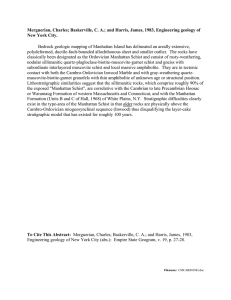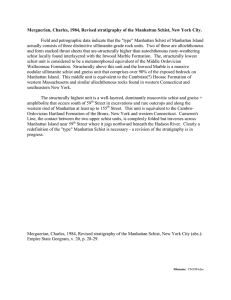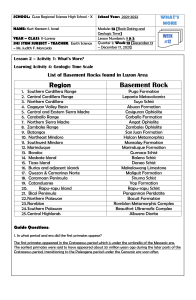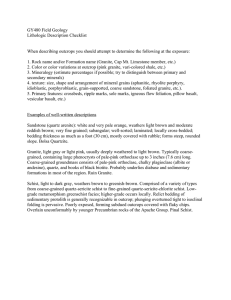Baskerville, C. A.; and Merguerian, Charles, 1983, Stratigraphic differentiation in... Manhattan Schist, New York City.
advertisement
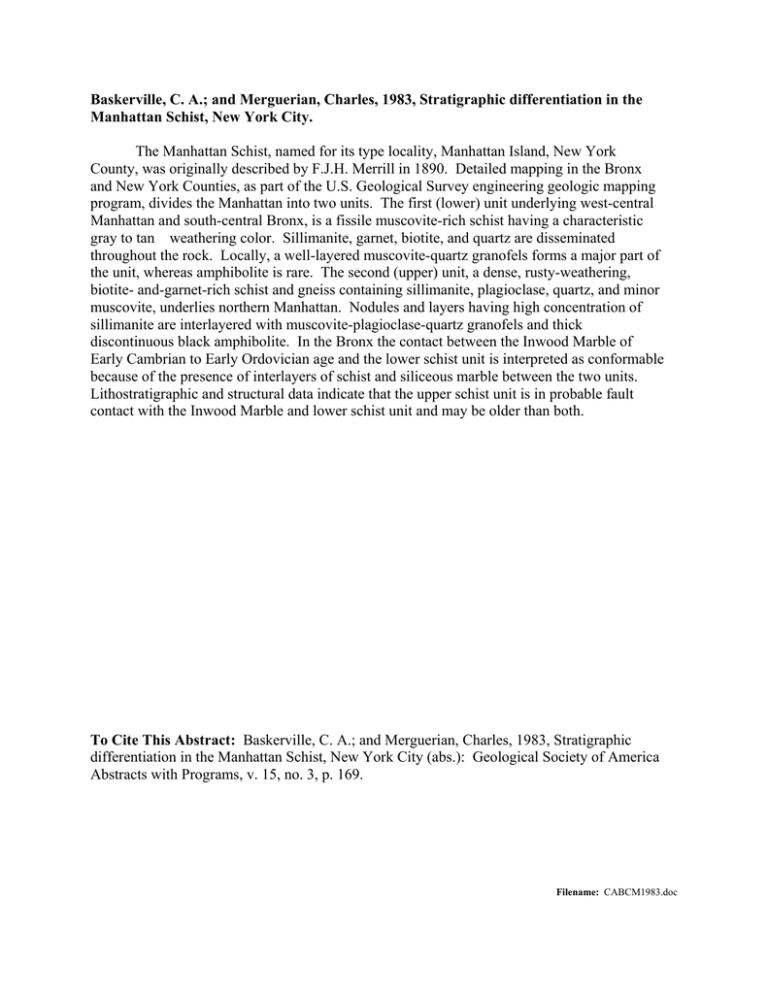
Baskerville, C. A.; and Merguerian, Charles, 1983, Stratigraphic differentiation in the Manhattan Schist, New York City. The Manhattan Schist, named for its type locality, Manhattan Island, New York County, was originally described by F.J.H. Merrill in 1890. Detailed mapping in the Bronx and New York Counties, as part of the U.S. Geological Survey engineering geologic mapping program, divides the Manhattan into two units. The first (lower) unit underlying west-central Manhattan and south-central Bronx, is a fissile muscovite-rich schist having a characteristic gray to tan weathering color. Sillimanite, garnet, biotite, and quartz are disseminated throughout the rock. Locally, a well-layered muscovite-quartz granofels forms a major part of the unit, whereas amphibolite is rare. The second (upper) unit, a dense, rusty-weathering, biotite- and-garnet-rich schist and gneiss containing sillimanite, plagioclase, quartz, and minor muscovite, underlies northern Manhattan. Nodules and layers having high concentration of sillimanite are interlayered with muscovite-plagioclase-quartz granofels and thick discontinuous black amphibolite. In the Bronx the contact between the Inwood Marble of Early Cambrian to Early Ordovician age and the lower schist unit is interpreted as conformable because of the presence of interlayers of schist and siliceous marble between the two units. Lithostratigraphic and structural data indicate that the upper schist unit is in probable fault contact with the Inwood Marble and lower schist unit and may be older than both. To Cite This Abstract: Baskerville, C. A.; and Merguerian, Charles, 1983, Stratigraphic differentiation in the Manhattan Schist, New York City (abs.): Geological Society of America Abstracts with Programs, v. 15, no. 3, p. 169. Filename: CABCM1983.doc
